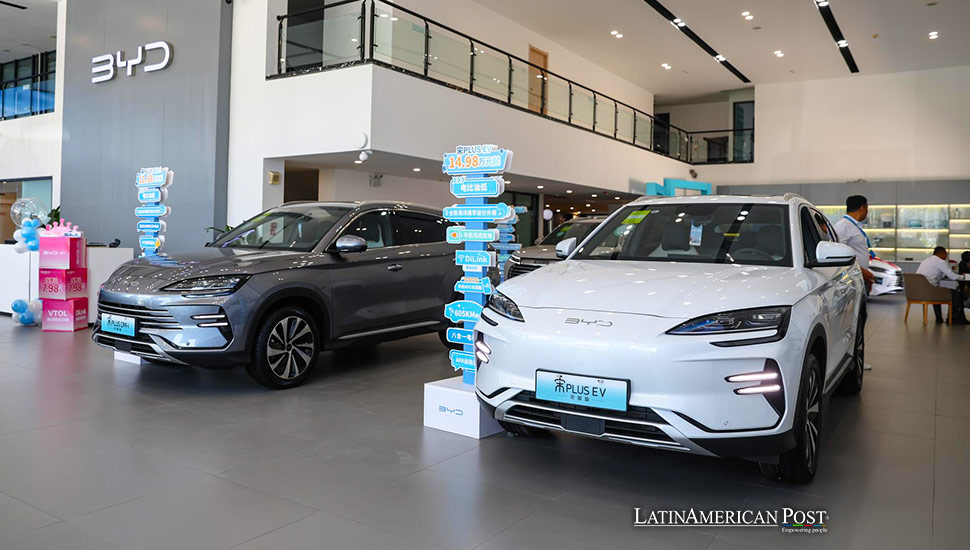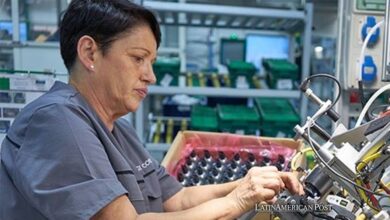BYD Marks Its Entry into Mexico with the SHARK Pickup Launch

In a historic move, Build Your Dreams (BYD), a leading global new energy vehicle manufacturer, held its first official launch outside China in Mexico, unveiling the SHARK pickup in its global product lineup.
This Tuesday, Mexico City became the stage for a significant development in the automotive industry as Build Your Dreams (BYD), a pioneering Chinese new energy vehicle company, unveiled its SHARK pickup. This event marks BYD’s first official product launch outside of China, signaling its commitment to expanding its global presence in the hybrid plug-in electric vehicle (PHEV) market.
Mexico’s choice for the SHARK pickup’s launch is no coincidence. The country’s vast agricultural landscapes and a burgeoning demand for versatile and robust vehicles make it an ideal location for introducing new energy solutions tailored to urban and rural settings. With an estimated annual sales potential of 300,000 pickups, Mexico presents a fertile ground for BYD’s innovative offerings.
Stella Li, Executive Vice President of BYD and CEO of BYD America, emphasized the significance of this launch, stating, “We are prepared to redefine the conventional fuel collection landscape through advanced technology, offering users a lifestyle characterized by unlimited opportunities. BYD is ushering in the era of new global energy harvesting.”
BYD’s Expansion and Innovation
BYD’s expansion into Mexico is part of a broader strategy to dominate the global new energy sector. The company already boasts the title of the world’s largest manufacturer of new energy vehicles, a testament to its extensive investment in research and development. With over 100,000 staff in R&D and more than 48,000 active patents, BYD is at the forefront of technological innovation.
The SHARK pickup itself is a marvel of engineering. It can accelerate from 0 to 100 km/h in just 5.7 seconds and has a combined range of 840 kilometers on a single charge. Its payload capacity of up to 835 kilograms highlights its utility and performance, aligning with the needs of a diverse clientele.
Historical Context of Automotive Industry in Latin America
Latin America has a rich history in the automotive sector, which is traditionally dominated by internal combustion engines. However, the region has gradually shifted towards sustainable and renewable energy sources, driven by environmental concerns and the global push towards decarbonization. BYD’s entry into this market with a new energy vehicle highlights a significant shift in regional automotive manufacturing and aligns with broader environmental goals.
While Mexico offers substantial opportunities for new energy vehicles, the transition is challenging. The country needs to ramp up its renewable energy capacity to support large-scale electric vehicle production demands. Additionally, infrastructure for electric vehicles, such as charging stations, must be expanded to accommodate the anticipated growth in this sector.
Future Prospects
BYD is considering setting up an electric vehicle production plant in Mexico. The decision on the plant’s location is expected by the end of the year, which could further cement Mexico’s role as an international hub for hybrid and electric vehicle manufacturing.
This move could potentially transform the region’s economic landscape, creating jobs, fostering technological expertise, and reducing the automotive industry’s environmental impact. Moreover, it would position Mexico as a leader in the new energy sector, attracting more global players to invest in the region.
Also read: Mexico Tackles Chinese Shoe Dumping: A Move to Protect Local Industry
BYD’s launch of the SHARK pickup in Mexico is more than just a product introduction; it is a statement of intent from one of the world’s leading new energy vehicle manufacturers. It reflects a commitment to innovation, sustainability, and global partnership. As Latin America continues to embrace new technologies and moves towards a greener future, initiatives like this will play a crucial role in shaping the region’s economic and environmental trajectory.





